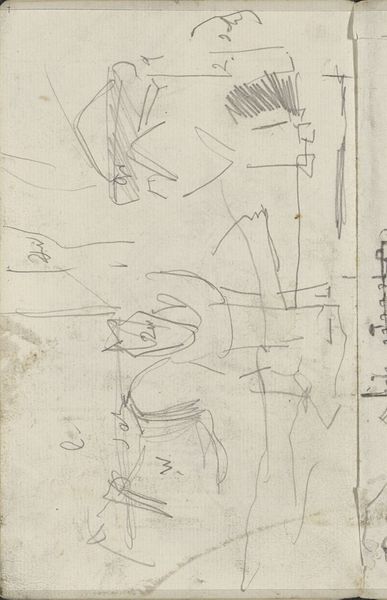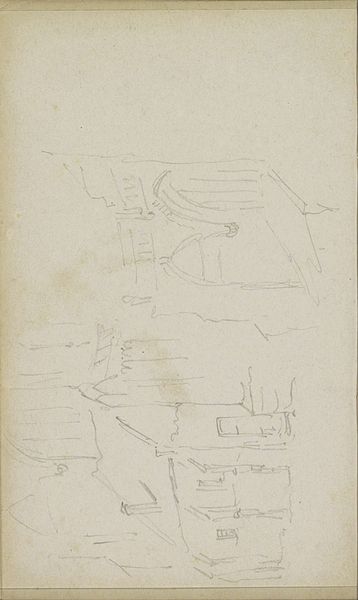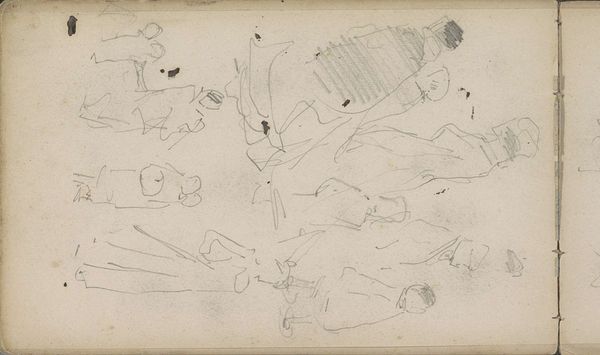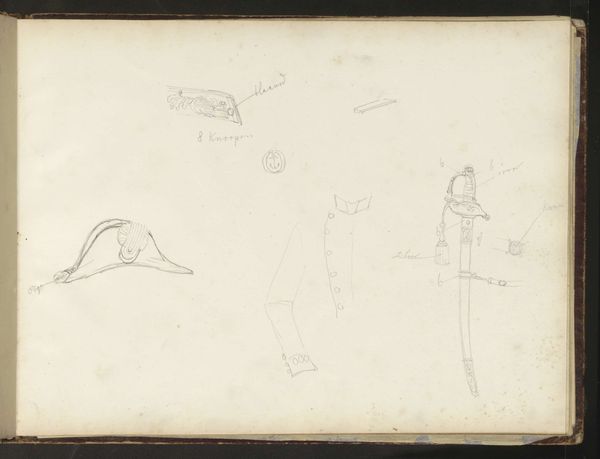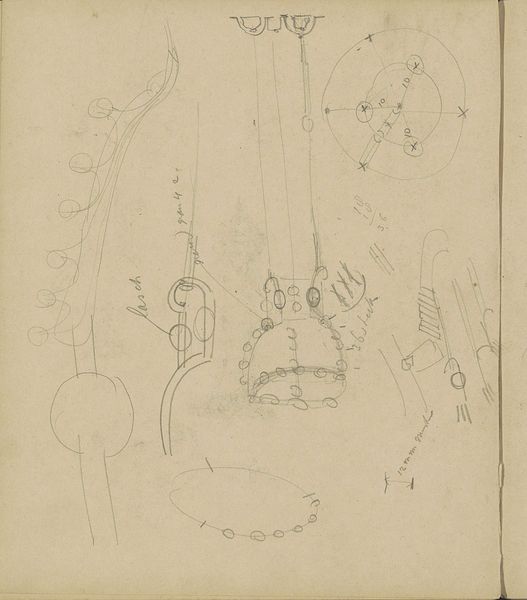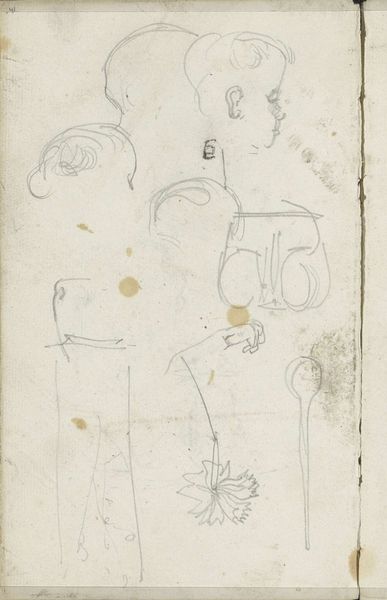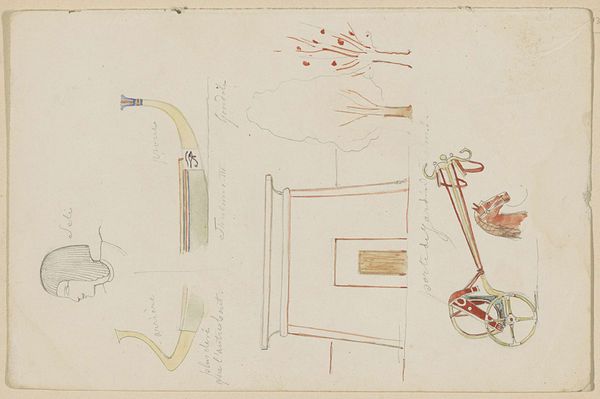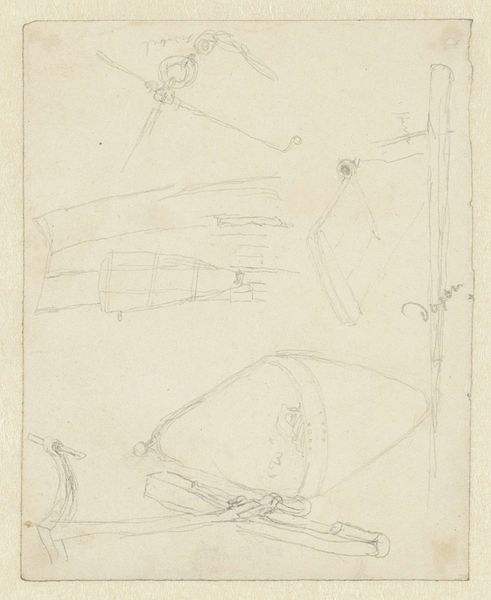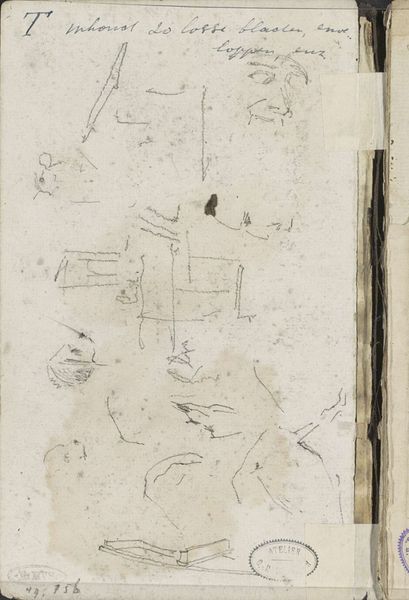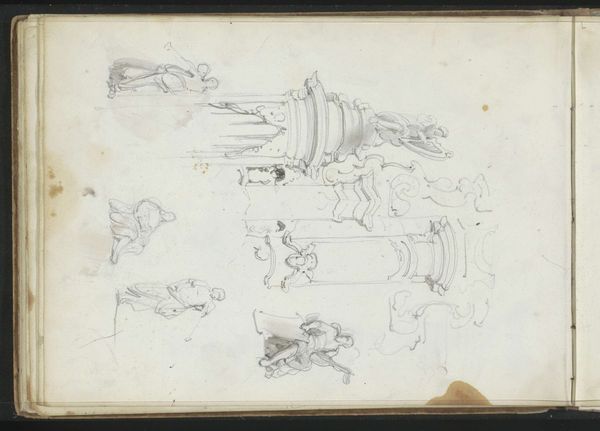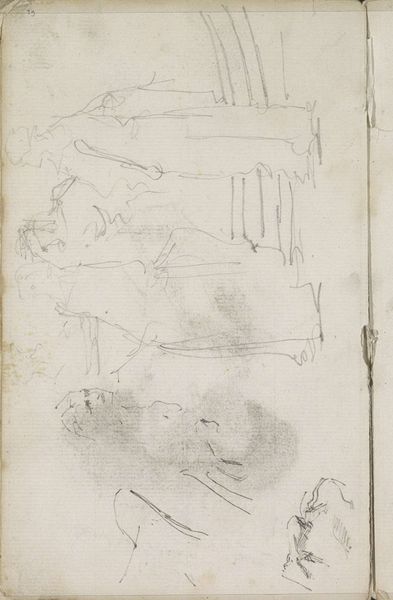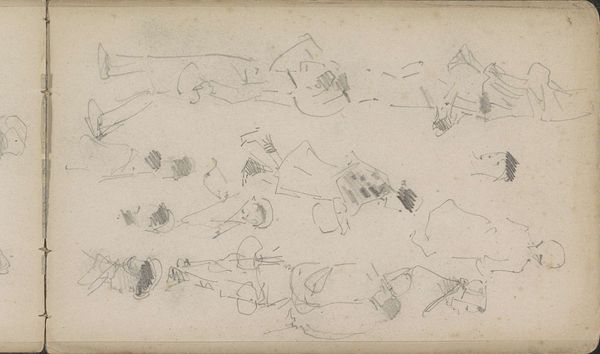
drawing, paper, pencil
#
drawing
#
aged paper
#
toned paper
#
light pencil work
#
quirky sketch
#
pencil sketch
#
ancient-egyptian-art
#
figuration
#
paper
#
personal sketchbook
#
ink drawing experimentation
#
ancient-mediterranean
#
sketch
#
pencil
#
line
#
sketchbook drawing
#
watercolour illustration
#
sketchbook art
Copyright: Rijks Museum: Open Domain
Willem de Famars Testas made this study sheet with graphite on paper. The quick, precise lines of the drawings capture various objects and figures. You can see the throne of Ramses III, along with assorted vessels and human forms. It’s not the final product, but a means to an end. The visible pencil strokes are integral to the drawing, revealing the artist’s process of observation and translation. It is an economic medium, and the visible pencil strokes are integral to the drawing, revealing the artist’s hand. Testas's engagement with these artifacts reflects a broader European fascination with ancient Egypt during the 19th century. The artist carefully reproduces the aesthetics of the throne and vessels, preserving them for study, knowledge, and artistic exploration. Drawings like these are vital for understanding the ways artists engage with history, and the labor required to reproduce designs. They are not merely copies, but works of art in their own right.
Comments
No comments
Be the first to comment and join the conversation on the ultimate creative platform.

